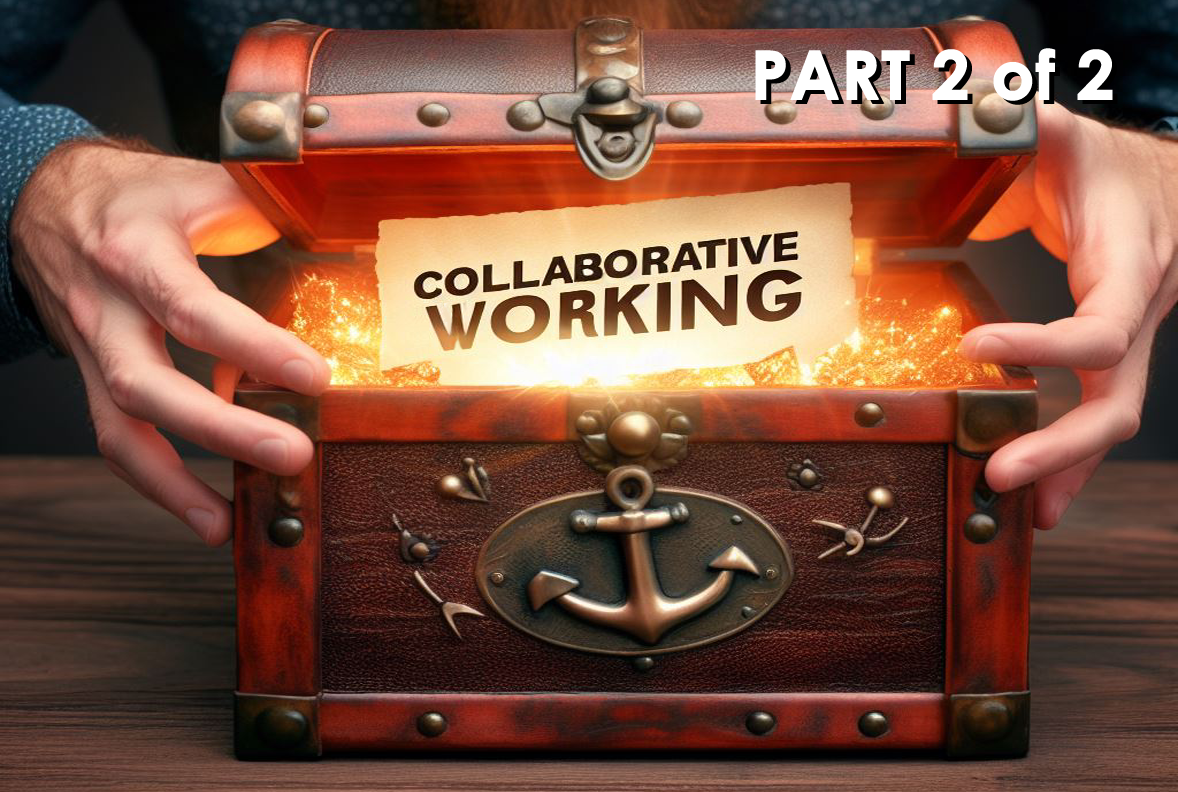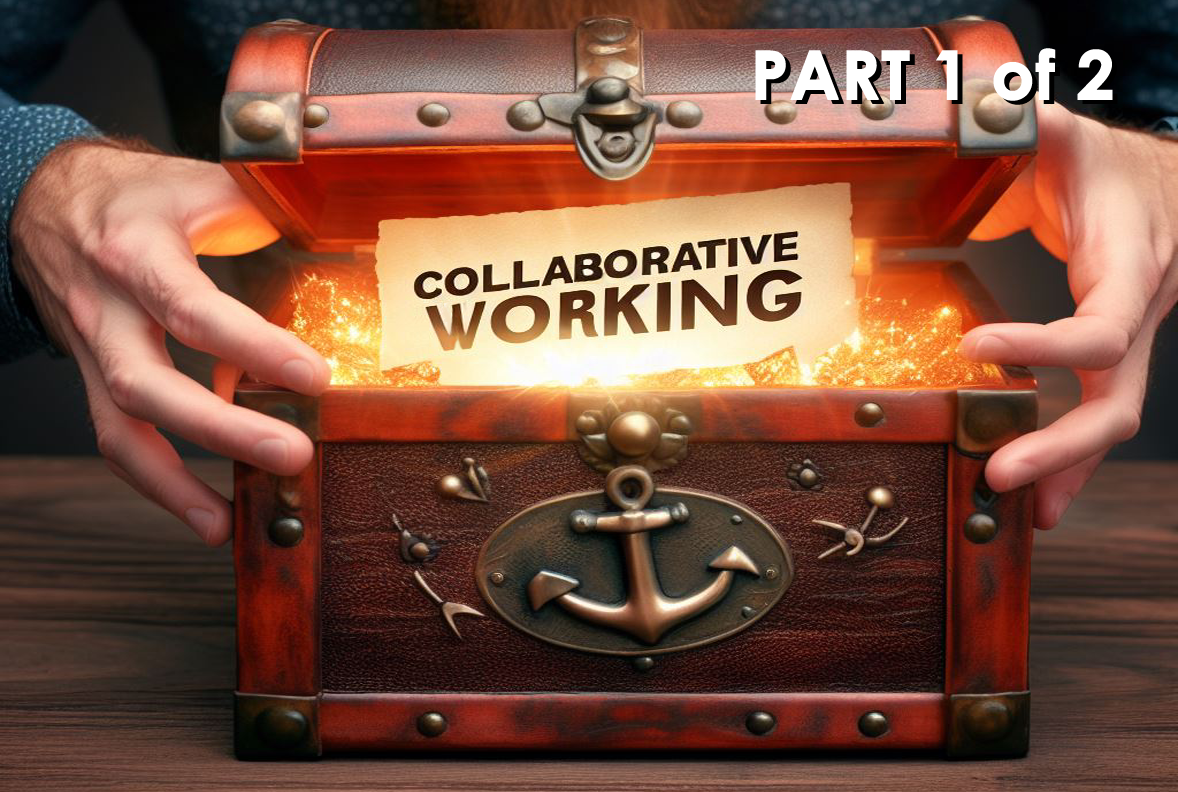Collaborative Working
Collaborative Working is simultaneously one of the most insightful and frustrating domains out there.
On the one hand, all proponents absolutely recognise that Complexity requires high-value connections and interactions between participants in an Ecosystem.
They know that increased specialisation necessitates Collaborative Working, that the right partnerships at the right Lifecycle stage can transform results, that risk and reward can be shared to everyone’s benefit and that the total is often greater than the sum of its parts.
On the other hand, most proponents treat Collaborative Working as something to do, train in or implement – sometimes even as the end goal in and of itself – and often assume that Value will inevitably and necessarily follow.
Most common is training in “collaborative behaviours”; in the worst cases, people are “ordered” to “work collaboratively”, whether in contracts or by management decree.
What is missing is an understanding that Collaborative Working is an emergent property – a Complex phenomenon – and only truly happens when people are engaged and motivated to self-organise around the Things That Matter and deliver change.
Everything else is a facsimile of Collaborative Working, and whilst standards such as ISO 44001 make a valuable contribution in introducing the concept, raising the profile, and suggesting best practice, there is no other “formula” for success than:
- Establishing the Things That Matter to potential or actual customers.
- Identifying where potential partners align with those Things That Matter.
- Engaging at scale to prioritise areas of alignment and mutual interest.
- Revealing and involving those that show passion, responsibility and ability in those areas.
This is what creates the conditions in which Collaborative Working organically emerges; without these conditions, no amount of “behavioural training” will have any lasting effect, and behaviours will default back to where they were.
And that is the contribution that Value Management makes, realising the potential of Collaborative Working that we’ve recognised throughout, as demonstrated by e.g.:
- Being involved with the evolution of ISO 44001 since before it was even BS 11000.
- Encapsulating the ICW’s Toolbox within our ARC Diagnostic framework.
- Working with ASAP to develop its PCAP tool.
Articles related to Collaborative Working:
Unlocking Collaborative Working: Part 2
Unlocking Collaborative Working: Part 2 This article – split here into Part 1 and Part 2 – originally appeared in the May 2019 edition of The Partner (pp88-89). It demonstrates how to ground high-level Things That Matter through measurable, actionable Value Codes – an early example of…
Unlocking Collaborative Working: Part 1
Unlocking Collaborative Working: Part 1 This article – split here into Part 1 and Part 2 – originally appeared in the May 2019 edition of The Partner (pp88-89). It demonstrates how to ground high-level Things That Matter through measurable, actionable Value Codes – an early example of the Three Steps to Value. The article remains fully…
Perceptual Positions
The Importance of Perceptual Positions Perceptual Positions are different perspectives from which to view something. Understanding what these positions are and how to use them can be an extremely powerful way to gain insights and understanding that may not be available from your starting or standard viewpoint. Typically…
Value Management Is Unique
Why Value Management Is Unique Artificial Intelligence (AI). Agile. LEAN. Alliancing. Relational Contracting. Collaborative Working. Just some of the initiatives, tools and approaches out there today each trying to attract and excite adherents and potential clients. Where does Value Management fit in? Is it just another one to…
The Current Cutting Edge?
Is This Really The Current Cutting Edge? I recently attended a two-day event for collaborative working professionals and one session on the agenda particularly caught my eye. It was billed as an overview of how a leading pharmaceutical company sought to obtain an “aligned and nuanced” overview…
Cross-Functional Internal Consultants
The Untapped Powerhouse CEOs Are Ignoring: Cross-Functional Internal Consultants as the Ultimate Change Agents In a world where businesses face constant disruption and relentless competition, CEOs are under enormous pressure to implement change and stay ahead of the curve. While many organizations invest heavily in external…
Ineffective Strategic Relationships
Strategic Relationships Need to be More Effective The need to improve the effectiveness of strategic relationships is widely acknowledged, and can be seen in: The growth of “relational contracting” and “collaborative working” as disciplines. The increasing number of associated professional bodies and industry associations, many of which we…
Defining Strategic Relationships
What ARE “Strategic” Relationships? However you define and measure value – revenue, reputation, brand, intellectual property, risk management, etc – your strategic relationships are typically those 20% of relationships that contribute directly towards delivering 80% of that value. An organisation’s relationships are often represented on a Kraljic…
Request an invitation
Request an invitation to self-diagnose the symptoms of what’s not working in your strategic relationship by sending us the following information.









